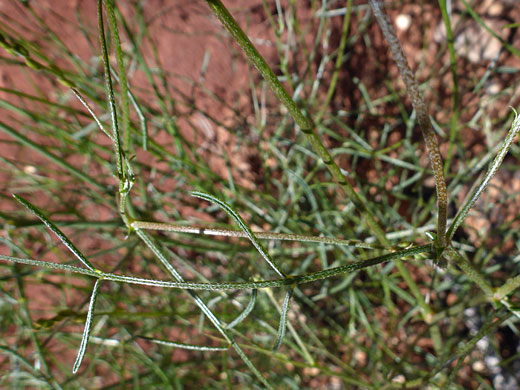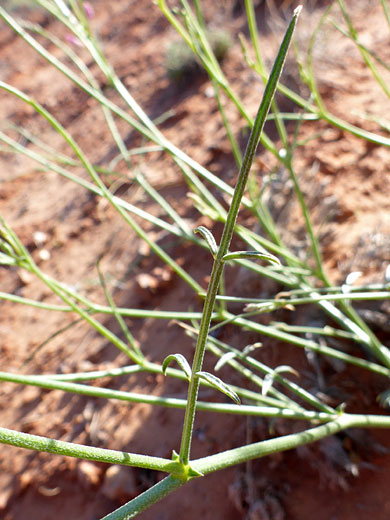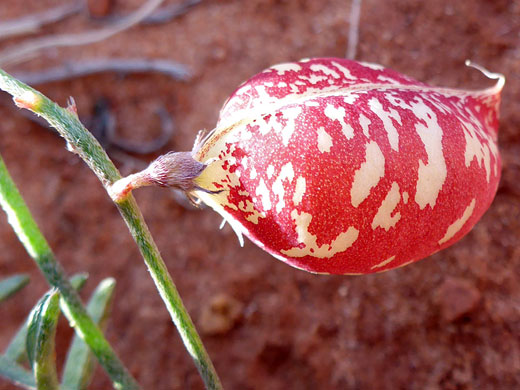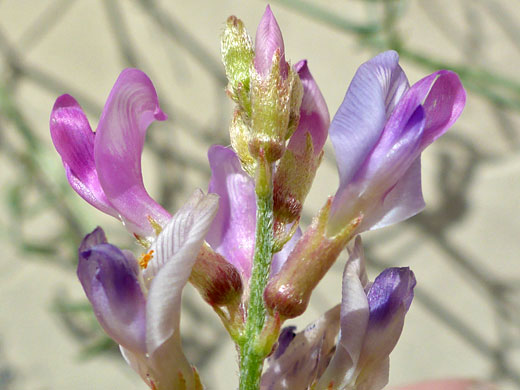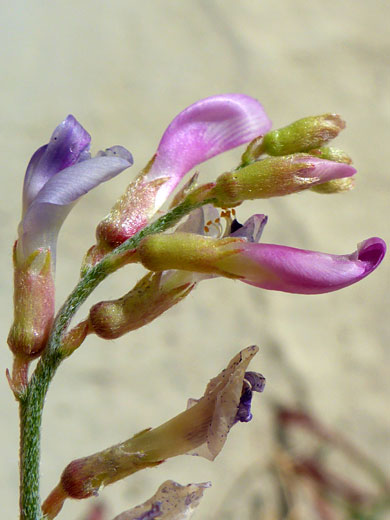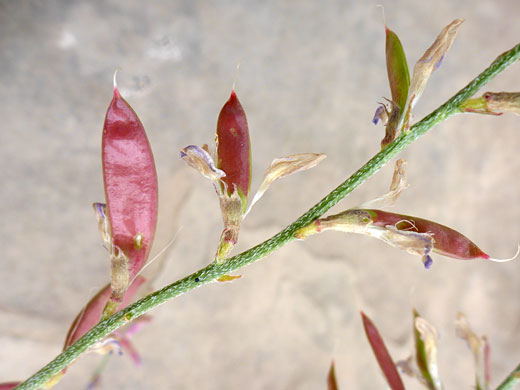Common name:
Painted milkvetch
Family:
Scientific name:
Astragalus ceramicus
Main flower color:
Range:
The Rocky Mountain states, west to the Great Basin (not California or Oregon)
Height:
Up to 12 inches
Habitat:
Grassland, pinyon-juniper woodland, scrubland; often sandy locations, from 3,000 to 8,000 feet
Leaves:
Alternately, pinnately divided into up to 13 narrow, linear leaflets, these up to 0.7 inches long
Season:
April to July
The seed pods are the most recognizable part of astragalus ceramicus; they are inflated, egg-shaped, up to 1.5 inches long and have a mottled appearance; red or purple with irregular white blotches. Flowers are pale purple to white, while the calyx is pale green, lightly covered with strigose hairs, black or white; the five calyx lobes are toothed. The banner petal is bent back at around a 60 degree angle. The wing petals are longer than the keel petal. Flowers contain a pistil and between 5 and 10 stamens. Flowers are produced in small numbers, with an alternate arrangement, in a elongated cluster.
Stems and leaves have a light to dense covering of strigose hairs. Plants produce one stem, ascending or decumbent. Leaves are divided into narrow, well-separated leaflets; the terminal leaflet is the longest. At the base of each leaf is a pair of short, pointed stipules. Leaves are often folded along the midvein.
There are three varieties of astragalus ceramicus: var apus (Idaho and west Montana) has stalkless seed pods, while the other two have pods on short stalks; var ceramicus (Four Corners states) with narrowly linear leaflets, and var filifolius (Great Plains and northern Rocky Mountains) with thread-like leaflets.
Stems and leaves have a light to dense covering of strigose hairs. Plants produce one stem, ascending or decumbent. Leaves are divided into narrow, well-separated leaflets; the terminal leaflet is the longest. At the base of each leaf is a pair of short, pointed stipules. Leaves are often folded along the midvein.
There are three varieties of astragalus ceramicus: var apus (Idaho and west Montana) has stalkless seed pods, while the other two have pods on short stalks; var ceramicus (Four Corners states) with narrowly linear leaflets, and var filifolius (Great Plains and northern Rocky Mountains) with thread-like leaflets.
All Contents © Copyright The American Southwest | Comments and Questions | Contribute | Site Map



